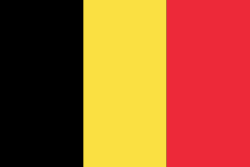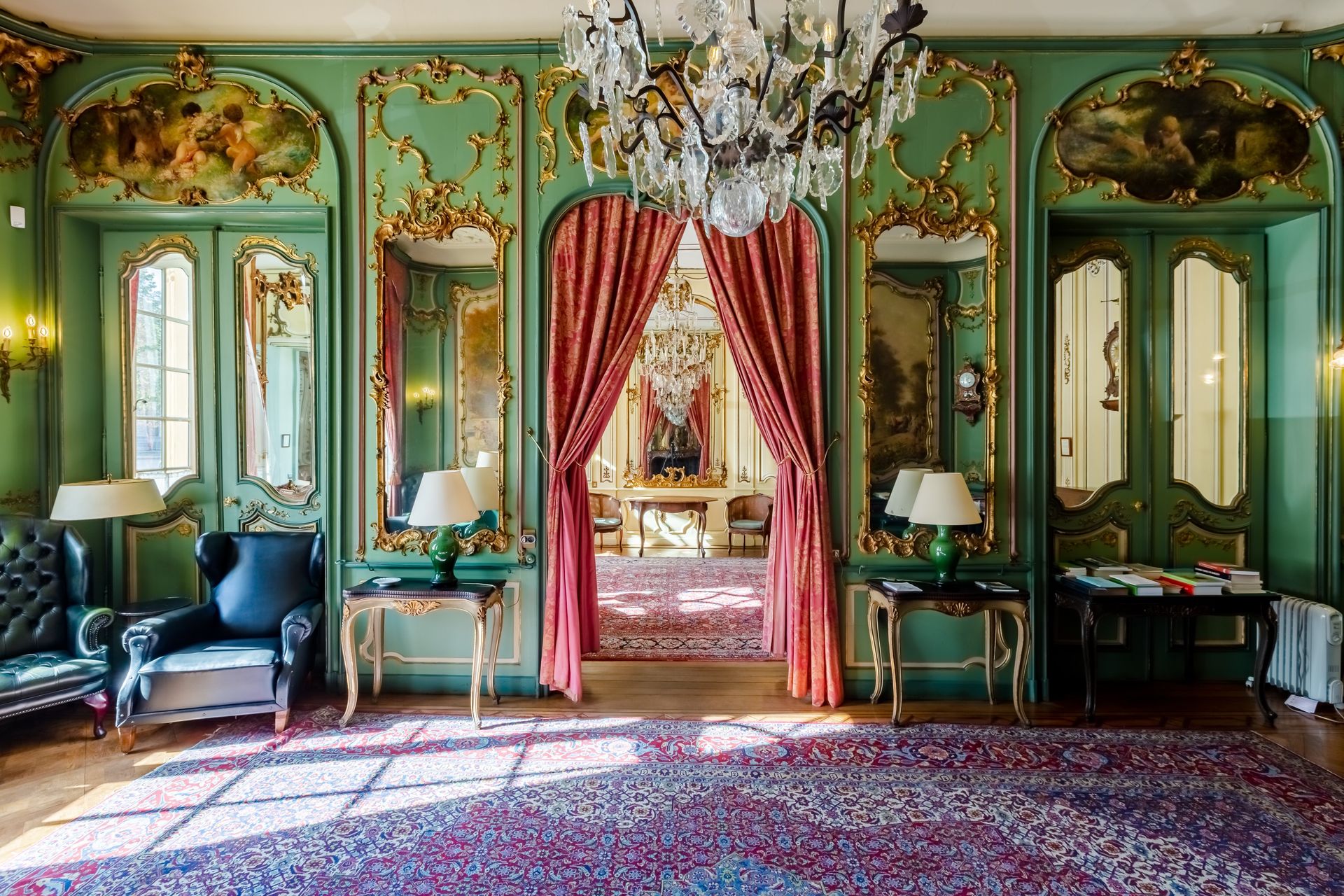HOTEL FALLIGAN
L’HÔTEL FALLIGAN
Located on the Kouter in the heart of Ghent, Hôtel Falligan is a masterpiece of Rococo architecture. Since 1802, it has been home to the Club Falligan, also known as the Royal Literary Society. True to its cultural and social mission, the club welcomes its members in an elegant and well-preserved setting.
PRESENTATION
Built in the 18th century, Hôtel Falligan has retained the grandeur and refinement of its time. The interconnected salons, tall windows flooding the rooms with light, ornate mirrors, crystal chandeliers, and paintings by van Reysschoot make it an exceptional venue. For over two centuries, it has been a prestigious meeting place for art and culture enthusiasts.
While the exterior façade reflects the Regence style with its understated elegance, the interior reveals a sophisticated Rococo design. Above the grand entrance in the inner courtyard, the family crest of Hector and Agnès Falligan remains proudly displayed, a reminder of their enduring legacy.
HOUSE BEAUCARNE
House Beaucarne is a historic residence near Oudenaarde owned by the same family since 1748. Today, it remains in the hands of the Beaucarne and Fredericq descendants, who oversee guided tours and regularly host public events.
PRESENTATION
Founded in the 18th century, House Beaucarne has remained in the hands of the same family for 250 years. The house has preserved its original interiors, allowing visitors to step back into the 18th and 19th centuries.
The Beaucarne and Fredericq families were passionate collectors of antiques and art, and the house displays period furniture from Saint-Sauveur Abbey in Ename. Other remarkable collections include antique dolls’ houses, miniatures, toy theatres, and religious artifacts.
The garden, designed in the 19th century, was once considered one of the finest in Flanders. It is now home to Belgium’s oldest surviving grape greenhouse.
LAARNE CASTLE
One of Belgium’s best-preserved moated medieval castles, Laarne Castle has evolved into an elegant aristocratic summer residence. The Royal Association of Historic Houses and Gardens of Belgium owns the castle and is managed by the heritage organization Herita.
PRESENTATION
Dating back to the 13th century, Laarne Castle retains remarkable medieval features, including its round towers and square keep. In the 17th century, it was the site of infamous witch trials before being transformed into a noble retreat in 1673. Today, the castle boasts magnificent halls, such as the Knights’ Hall, refined salons, a former prison, and a 14th-century chapel adorned with exquisite frescoes. Its inner courtyard reflects the fusion of medieval and 17th-century architecture. The castle also houses an exceptional collection of 500 silver pieces, one of the finest in Belgium.
LOZER CASTLE
Nestled between the Flemish Ardennes and the Lys Valley, Lozer Castle is a historic gem. Owned by the della Faille d’Huysse family since 1654, it is now in the hands of the tenth generation.
PRESENTATION
Transformed in the 18th century in a neoclassical style, the castle is set within a stunning 13-hectare park, designed in the 1880s by renowned landscape architect Friedrich Eduard Keilig.
The estate features tranquil ponds, winding pathways, and charming outbuildings– including a garden pavilion and a farmhouse – while a double avenue from the castle walls leads to a church from the nineteenth century.
OOIDONK CASTLE
Nestled in a bend of the Lys River, just a few kilometers from Ghent, Ooidonk Castle is regarded as a gem of flamboyant Renaissance architecture. Surrounded by moats and lush gardens, it offers a haven of peace and serenity, despite its turbulent past.
PRESENTATION
In the 16th century, the castle belonged to Philip de Montmorency, Count of Horn, and an ally of William of Orange. After his execution in 1568, the castle suffered repeated destruction during the Wars of Religion. It was later rebuilt in Renaissance style by Maarten della Faille, a wealthy Antwerp merchant.
In 1864, Senator Henri t’Kint de Roodenbeke and his wife, Zoé de Naeyer purchased the estate. Today, 150 years later, their descendant, Count Henry t’Kint de Roodenbeke, still lives there.
ROZELAAR CASTLE
Rozelaar Castle, dating back to the Middle Ages, is located in Lochristi. After several partial destructions, the original castle was replaced by a new building in the early 19th century. In the second half of the 19th century, the Vuylsteke family transformed the castle grounds into a horticultural centre.
PRESENTATION
Rozelaar Castle has medieval origins and was once part of the Saint Bavo’s Abbey estate in Ghent, serving as a residence for its abbots.
In the 18th century, Prince-Bishop Ferdinand von Lobkowicz created an extensive garden featuring a rare collection of exotic plants. He also added stables and two orangeries, which were later incorporated into the current building.
The castle, as it stands today, was commissioned by the De Cock family and designed in the early 19th century by Ghent architect Louis Minard in a Neoclassical style. Built on the foundations of the former moated castle, only two medieval towers remain, marking the entrance to the estate.
In the late 19th century, Charles Vuylsteke transformed the grounds into a renowned horticultural centre, introducing new ornamental plant varieties that gained international recognition.
Listed as a historical monument in 1995, the estate has recently undergone meticulous restoration under the supervision of architect Stéphane Boens.
VILLA MADONNA
Villa Madonna is an eclectic residence with Art Nouveau influences, built in 1906 on the Kruisberg hill in Ronse. Today, Joost and Caroline Van Goethem-Van den Bossche, who are passionately committed to preserving this exceptional heritage site, own it.
PRESENTATION
PRESENTATION Designed by architect M. De Noyette for Judge Edmond Matthys, the villa is set within a one-hectare landscaped park. The villa was designed to offer breathtaking views from every angle, thanks to its balconies, loggias, and observation towers.
Inside, the décor has remained intact, featuring wood paneling, marble fireplaces, a painted ceiling adorned with grape motifs, elegant parquet floors, and an exceptional tiled floor.
The estate features remarkable outbuildings, including a restored 19th-century bread oven, an ice cellar from 1880 with its original vaults, and a recently restored orangery.


















